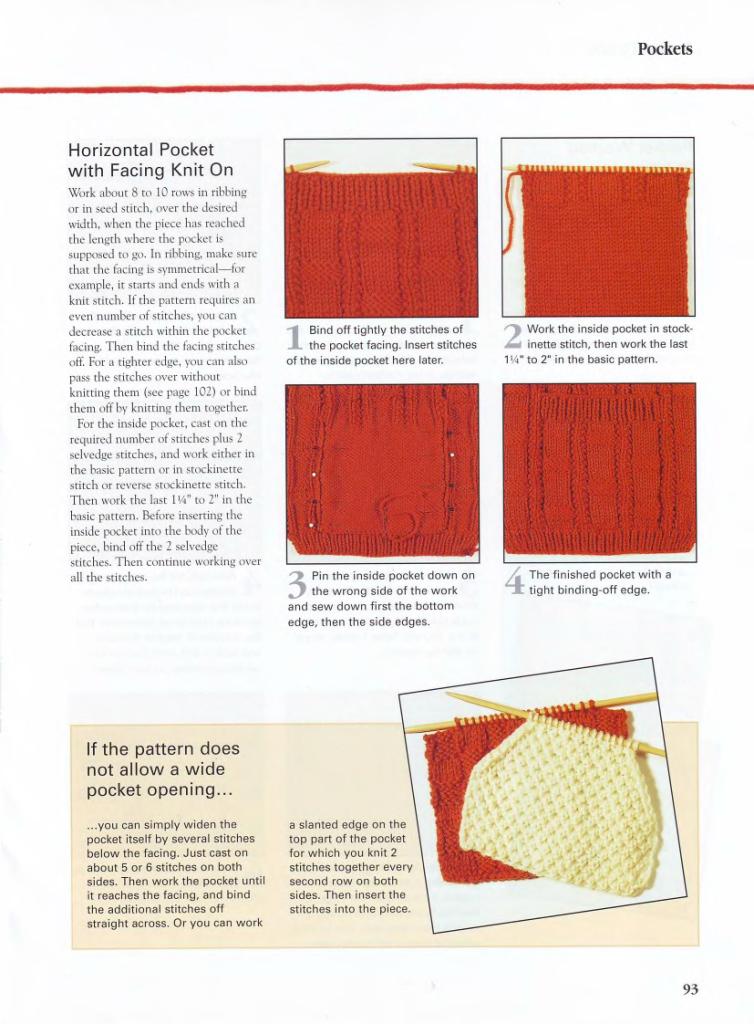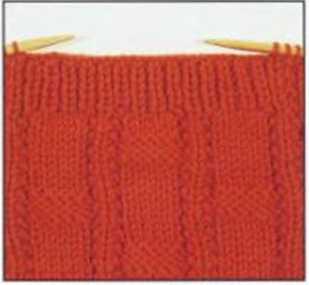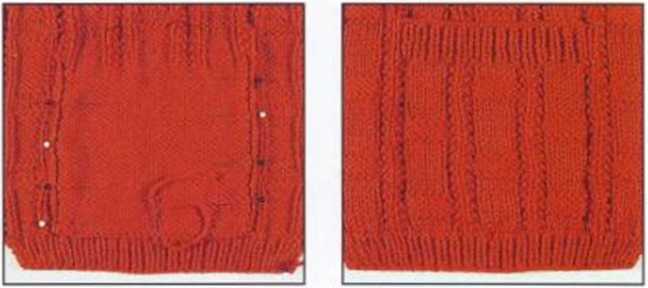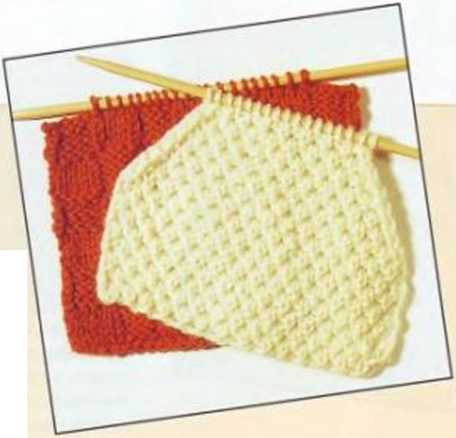093

Pockets



IW to 2“ in the basie pattem.
Horizontal Pocket with Facing Knit On
Work about 8 ro 10 r<nv> in ril>l>in« nr in sccd snich. uver the dcsired width. whcn the piece h.is reachod the length wlwrc the pk<ket i' supp<»scd to go. In ribbing, make surę tltat the fadni! i> >ymm«rieal—for oxample, ir st.ms .md cncU with a knit stitch. If the patiem rcquircs an even number ni srirches. you can decrease a stitch withtu lite pocket facing. Then bind the facing srirches off. For a tightcr edge. you can alao pass the srirches over without knitting them (sec page 102) or bind tltent off hy knitting them togcther.
For the inside pocket, cast on the reipiired number of stitches phi' 2 schedge stitchcs, and work either in rhe basie pattem t>i In stockmette stitch or rcverse stnekinette stitch. Then work rhe last P/i" to 2" in the bttsic pattem. Beiofe insertiag the inside pocket into the K>dy of the piece, bind off the 2 seleedge sticches. Then conttnuc working over alł the stitches.
IBind off tightly the stitches of the pocket facing. Insert stitches of the inside pocket here later.
3 Pin the inside pocket down on the wrong side of the work and sew down first the bottom edge, then the side edges.
4 The finished pocket with a tight binding-off edge.
a slanted edge on the top part of the pocket for which you knit 2 stitches together every second row on both sides. Then insert the stitches into the piece.

If the pattem does not allow a wide pocket opening...
...you can simply widen the pocket itself by several stitches below the facing. Just cast on about 5 or 6 stitches on both sides. Then work tho pocket until it reaches the facing, and bind the additional stitches off straight across. Or you can work
93
Wyszukiwarka
Podobne podstrony:
89873 MR293R190?8 1 Detail A Th* front wing is ldent-ical to that of the basie x 53 model, *xcr:pt f
❖ THE PAMPHLET - a very thin book with a paper cover. contaiiiing Information about a particula
EXPERT SYSTEMS Summa ry The duthor presents the basie concepts related to the storage of knowledge i
IMGP3175 Xeroderma pigmentosum The basie defect in XP is in nucleotide eicision repair (NER), leadin
fund to Id in the dotted lines to make creases and fold back / s i Iver paper The
"REALLY SEXY. SIZZLING KIND OF SEXY... MAKES YOU WANT TO MELT IN THE PROCESS."—BITTEN 8Y B
used to describe potential risk factors for injury to workers in the meatpacking industry. The
247Occupational Injuries and Infections r the annunl fluctuations ranging from 15 to 24 in the intcr
skanowanie0095 (2) “[g]ood readers become autonomous, able to read outside the classroom and to stay
Zamki Na Lodzie. PDF eBooks Download beginning to follow in the path of my father the lunger !) Fin
Summary The dissertation is devoted to radio-fibre systems in which optical fibres are used to dis-t
więcej podobnych podstron